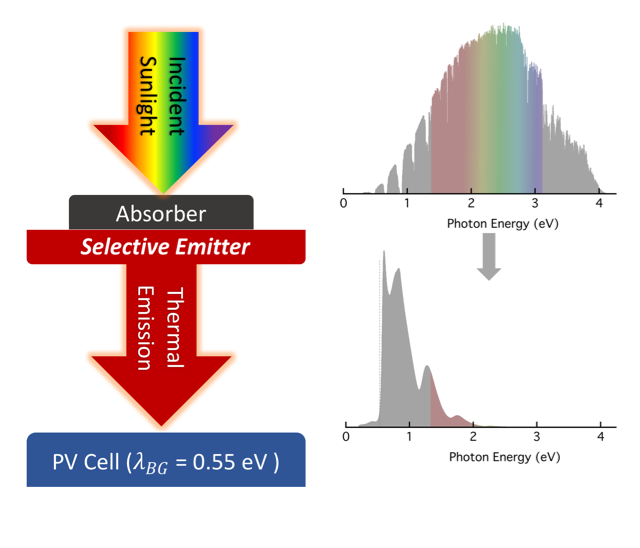Pareto Optimal Spectrally Selective Emitters for Thermophotovoltaics via Weak Absorber Critical Coupling
Nari Jeon, Jonathan J. Hernandez, Daniel Rosenmann, Stephen K. Gray, Alex B. F. Martinson, Jonathan J. Foley IV
Advanced Energy Materials
2018

Tailoring the emission spectra of a thermophotovoltaic (TPV) emitter away from that of a blackbody has the potential to minimize transmission and thermalization loss in a photovoltaic receiver. Selective TPV emitters can lead to solar energy conversion with efficiency greater than the Shockley–Queisser limit and can facilitate the generation of useful energy from waste heat. A new design is introduced to radically tune thermal emission that leverages the interplay between two resonant phenomena in simple planar nanostructures—absorption in weakly absorbing nanofilms and reflection in multilayer dielectric stacks. A virtual screening approach is employed to identify promising structures for a selective thermal emitter from a search space of millions, several of which approach the ideal values of a step‐function selective thermal emitter. One of these structures is experimentally fabricated and evaluated, which includes a weakly absorbing alloy with tailored optical properties fabricated by atomic layer deposition (ALD). The versatility of the design and fabrication approach result in an emitter with excellent spectral density (0.8 W cm−2 sr−1) and spectral efficiency (46.8%) at 1373 K. Future experimental challenges to a more accurate realization of the optimal structures calculated are also considered.